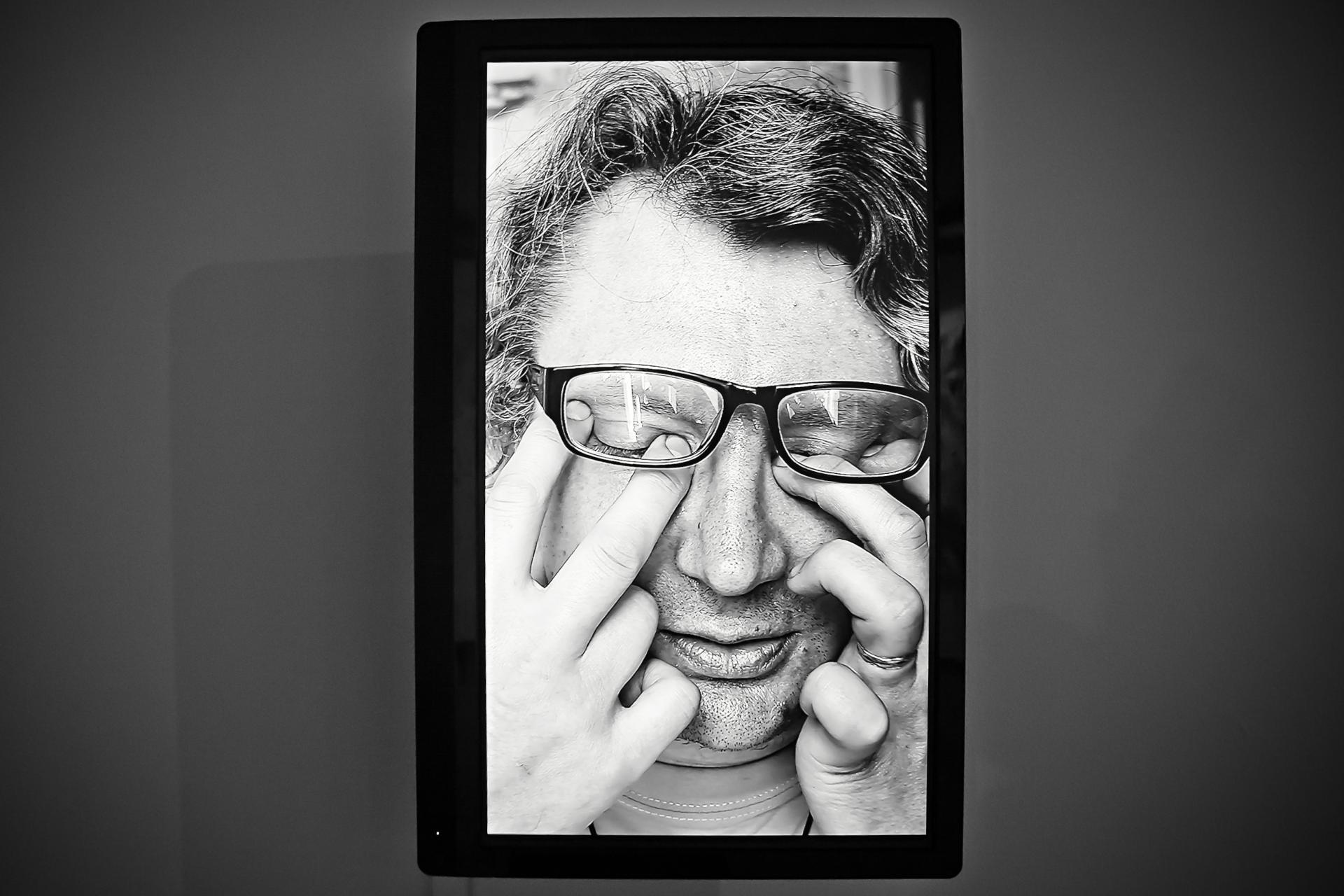
The exhibition project is held as part of the Special Projects Program of the 4th Moscow Biennale of Contemporary Art.
Shutov’s installation appears to be a freehand reproduction of Sigmund Freud’s office, complete with his famous couch and armchair. However, the story Sergei Shutov has spatially “framed” here is derived neither from psychoanalysis nor science art, although it may well reproduce the logic of that very genre.
Key to the project is the role played by the electro-opthalmic stimulator — an instrument for diagnosing and stimulating a visual analyzer with electric currents. This instrument causes so-called phosphenes to appear — visual sensations that, without light entering a person’s eyes, arise as shining dots, figures appearing independently in the dark. Visitors to the exhibition can try out the instrument and undergo their very own para-psychedelic experience. The exposition also includes six monitors on which six Moscow art critics, or, as the artist puts it, “specialists in verbalizing artistic images,” describe their experience observing phosphenes in real time. The artist faithfully reproduces their descriptions as abstract paintings.
The viewer’s attention is drawn by the project’s many inversions. Shutov’s image production process is begun for him by the art critics; he simply completes it. The unfettered imagination is replaced by electro-stimulatory effects. Popular science takes the place of art. And all that is artistic and subjective gives way to the scientific and objective. Yet the action is set not in a modern medicine museum, but the office of the father of psychoanalysis, who made frequent recourse to free-association methods. And in Shutov’s work, this method loses its speciifc association with psychiatry and turns out to be an exclusive mandate for infintely free, subjective association.
Sergei Shutov’s art typically features eclectic excess alongside categorical anti-dogmatism: “My work is shining futurist cyber-punk archaism, a dance of phosphenes. I once asked Timur Novikov, who by then had already gone blind, what he saw in front of him. His reply was that he saw all sorts of Shutov paintings, as a sort of punishment. But that means that I am constantly in a state of genuine blindness, which is my reward.”
Awarded with “shining blindness,” Shutov is equally prepared to pour a whole number of different ideas into his new project, from Beuys’ idea about the artist inside all of us and the esoteric image of an “inner Shambhala,” to the utopia when art-making will be accessible to all and a dialogue between people from different branches of creativity. All these ideas turn into each other with blessed ease. And even the title of the exhibition, Phosphenes and You, referring to the era of “physicists and lyricists” in the 1960s, the artist turns these antagonistic figures into a single image of a romantic artist-scientist, at once both archaic and futuristic.